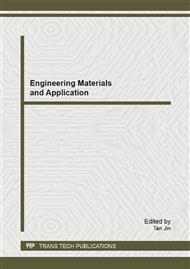p.372
p.378
p.384
p.389
p.396
p.401
p.408
p.414
p.419
Fracture Behavior of Aircraft Fuselage Materials under Thermal / Mechanical Loadings for Mode I Crack
Abstract:
Aluminum alloys are often used as the aircraft fuselage materials. Three materials of aluminum alloys 2A16, 7A09 and titanium alloy TC11 are selected in this work. The fracture behaviors of these materials are investigated under the combination of thermal and mechanical loads. The analytical model is an infinite plate with a line crack subjected to the uniform tension stress and thermal loading. The temperature boundary condition is that the temperature remains unchanged on the crack surfaces while the uniform heat flow is imposed at infinite. The analytical solutions of temperature field, stress field, stress intensity factor, strain energy density factor are solved by the complex function method. The failure stresses under the different conditions are calculated and compared for three materials by using the strain energy density theory. It is seen that the temperature effect would play an important role for the fracture behavior of aircraft fuselage materials.
Info:
Periodical:
Pages:
396-400
Citation:
Online since:
January 2013
Authors:
Price:
Сopyright:
© 2013 Trans Tech Publications Ltd. All Rights Reserved
Share:
Citation:


